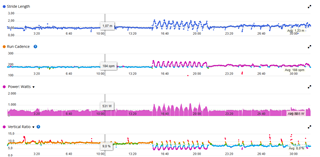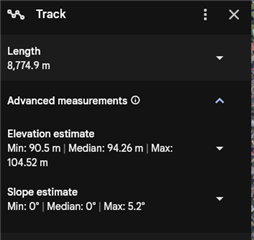Hello, A while ago, I reported that my Fenix 8 watch under-reports distance by a large (from a training athlete's perspective) amount, resulting in wrong running pace reported.
This affects someone who is actively training both during running - pace is under reported, as well as post training and in planning.
On today's 7km run - as reported by the Fenix 8 - the recorded GPS track distance was actually ~7.55km. So the distance is actually being recorded correctly, but the watch applies (as I've learned in the previous post) some corrections / calculations based on stride length and cadence, to figure out distance, and purportedly ignores the GPS track distance.
Garmin has also recently removed the ability for users to specify stride length manually - so you are stuck with what the watch "thinks" is your stride lenght based on accelerometer data, etc.
Now - to me as a runner who is actually training - distance is distance, based on map data and gps track length - not a calculation you are stuck with and have no control over. In today's run as reported by my F8 my running pace was 5:05min/km over a distance of 7.02km. But based on the recorded GPS track and MAP data - I had a running pace of 4:44min/km over 7.55km. These are two VERY DIFFERENT running paces / running zones, pertaining to DIFFERENT TYPES OF RUNS for DIFFERENT END GOALS within the training block. They cannot be used interchangeably!
Which one should I - an actively training runner - take as correct & accurate when running and planning my training block, with my top-of-the-line flagship sports watch?
Has anyone ever found a fix or workaround to have the ACTUAL track distance/map distance reported on their activities instead of useless calculations?
Also a note to Garmin - shouldn't you put a better use to your "athlete intelligence" technology - to analyze post-activity data and apply corrections based on hard facts (map topographic and survey data for distance / elevation) and IMPROVE such a CORE FEATURE of your devices like Running, instead of using it for shiny "golden badges" and an "intelligent insight" that tells me that my recent stress of 23 is lower than my average past stress of 25??? Current features like HILL SCORE and ENDURANCE score are utterly useless (algorithms are wonky and elevation data gets skewed by the slightest change in ambient pressure or temperature)
Why are athletes penalized when this is a "SPORTS WATCH" and we are getting newer and fancier "smartwatch", "wellness" and "social" features instead of focusing on having a ROBUST and ACCURATE training experience on a thousand dollar Flagship sports watch??!!





